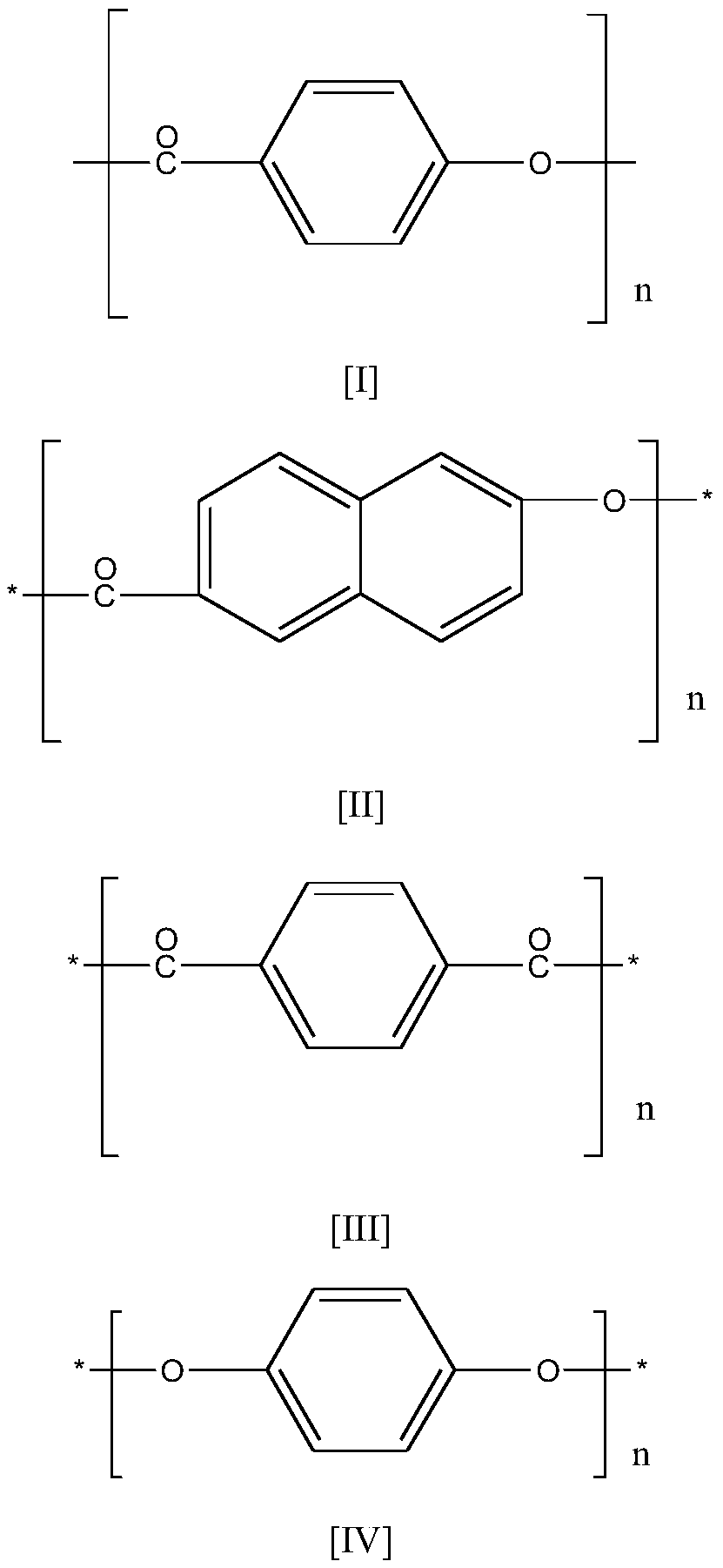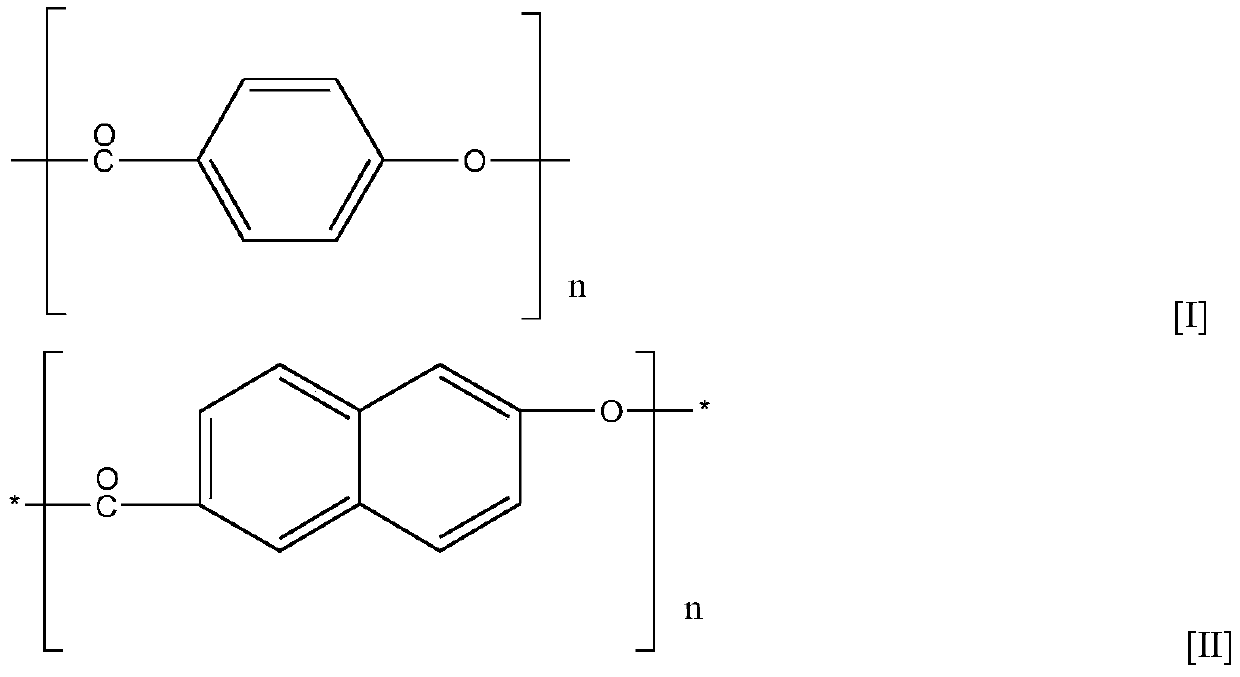Preparation method of wholly aromatic liquid crystal polyester nascent fibers
A liquid crystal polyester and primary fiber technology, which is applied in the field of fiber manufacturing materials and fibers, can solve problems such as uneven thickness, high equipment and cost requirements, and restrictions on the scale production of liquid crystal polyester spinning
- Summary
- Abstract
- Description
- Claims
- Application Information
AI Technical Summary
Problems solved by technology
Method used
Image
Examples
Embodiment 1
[0067] Using LCP-1 resin as a raw material, use a drum to vacuumize the LCP-1 resin particles for 6 hours under the conditions of 200°C and a vacuum degree of 30P.
[0068] After vacuum treatment, the gas content of the resin particles was measured using a gas chromatograph.
[0069] The molten material was passed through a filter (made of stainless steel) using a multifilament spinning device of Jiangxi Huayuan Electromechanical Co., Ltd., and then discharged from a spinneret hole, and melt-spun at Tm+10°C. The spinneret hole diameter was 0.2 mm and the number of holes was 22, and the spinning was carried out under conditions of a discharge rate of 25 g / min and a spinning speed of 400 m / min.
Embodiment 2、3、4 and comparative example 1 to 2
[0071] Resin particles were treated in the same manner as in Example 1, except that the kind of resin, the temperature and time of vacuuming were changed as shown in Table 1. Using the obtained pellets, spinning was carried out in the same manner as in Example 1. Table 1 shows the evaluation results of crystallization melting temperature, melt viscosity, melt viscosity ratio and spinning condition of the wholly aromatic liquid crystal polyester resin.
[0072] Table 1
[0073]
[0074] As a result of the evaluation, it was found that after the post-treatment, the content of small molecules contained in the particles decreased significantly, so when spinning at a temperature of Tm+10°C, the as-spun yarns of the examples had higher tensile strength than those of the comparative examples.
PUM
 Login to View More
Login to View More Abstract
Description
Claims
Application Information
 Login to View More
Login to View More - R&D
- Intellectual Property
- Life Sciences
- Materials
- Tech Scout
- Unparalleled Data Quality
- Higher Quality Content
- 60% Fewer Hallucinations
Browse by: Latest US Patents, China's latest patents, Technical Efficacy Thesaurus, Application Domain, Technology Topic, Popular Technical Reports.
© 2025 PatSnap. All rights reserved.Legal|Privacy policy|Modern Slavery Act Transparency Statement|Sitemap|About US| Contact US: help@patsnap.com



